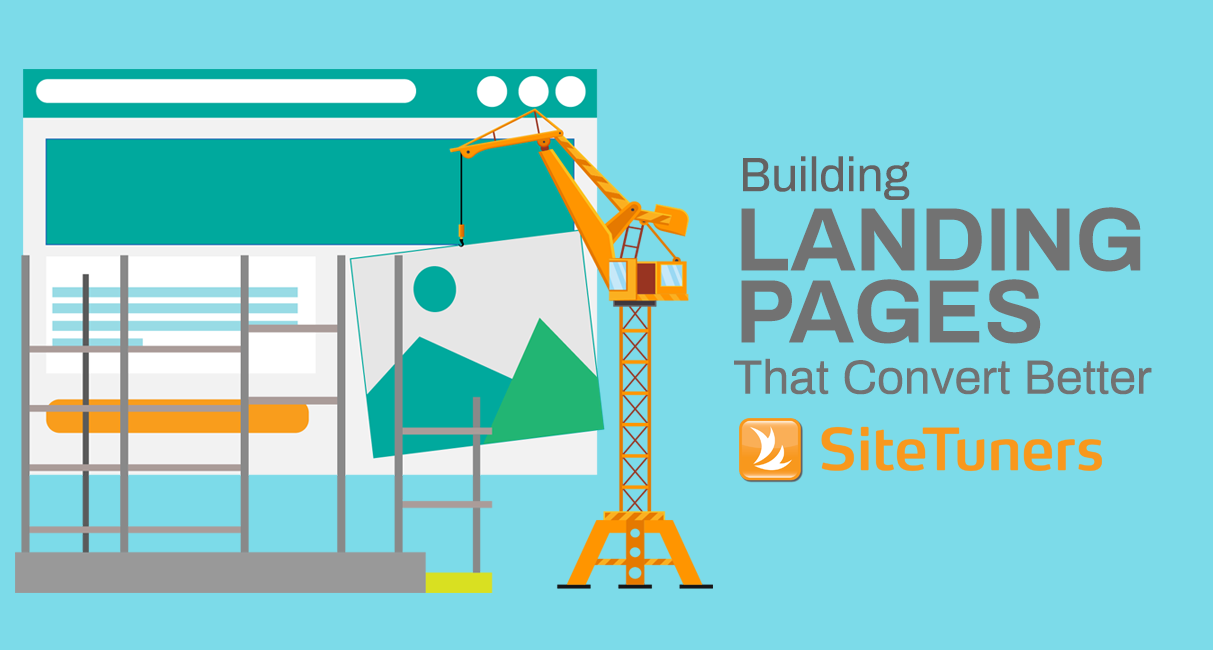In all likelihood, Oli Gardner, Co-Founder of Unbounce, has seen more landing pages than you. (About 80,000 as of May last year.)
98% of landing pages, he says, fail because of disregard for attention and context.
Start with a Campaign Goal
Remember Stephen Covey’s ‘begin with the end in mind’ when building your landing page.
Oli points out that you should …
- Never start a marketing campaign without a dedicated landing page
- Never build a landing page without establishing a campaign goal
The purpose of your page will inform what action you’d want people to take.
So, understanding upstream traffic sources and visitor intent – the context they came from – should be part of planning.
This is why in an ideal world, each inbound channel would have its own landing page because they have different contexts.
- Search, for instance, has intent.
- E-mail has conversation and can further be segmented- if you’re doing marketing automation, you might have people in varying relationships with you in terms of trust or the number of e-mails they’ve opened
Manipulate Attention
Online, attention is a scarce commodity.
So when visitors get to your page, focus their attention on what you want them to do.
ATTENTION RATIO
A campaign has only 1 goal.
Hence, the ratio of the number of things people can do on a dedicated landing page and the number of things they should do should be 1:1.
This does not happen when you send people from an ad to your home page which has several links. And this is why landing pages are critical.
VISUAL HIERARCHY
Use design deliberately to highlight what’s important on the page: your call-to-action (CTA).
Design elements should support your CTA, and not distract people’s attention from it.
- Proximity
Things that positioned close together are assumed to be related.
Statements or design elements that are close to the CTA are called closers. And they can either persuade or deter a visitor from clicking your CTA.
For instance, a disclaimer, that you’re required to put very close to the button, can discourage people. However, for a webinar registration, saying “Can’t make it? Sign up anyway and we’ll send you the recording” relieves people’s anxiety of not being able to attend and can get you more leads.
- Consistency
Represent the same type of content identically, so you don’t add unnecessary cognitive load on visitors.
Let’s say you have testimonials spread out in a long page. If you design testimonials identically, every time the user comes across one, they won’t have to figure out what type of content the block is.
This helps with readability.
- Anomaly
On the other hand, if something is important and you want it to stand out, make it different from the rest.
Let’s say you’re running a conference, and you have the speakers’ photos on the page. If you want visitors to notice certain speakers right away, you can put them above the rest or separate them. Or if everyone’s photos are in circles, put the ones you want to stand out in squares.
By interrupting the pattern or doing something unusual, you grab people’s attention.
Speaking of attention-grabbers …
- Motion
Motion trumps graphics and text.
It’s great at getting attention because people can’t help but look at movement.
One way you can use motion is as a scroll trigger when your design looks as if there’s nothing more down the page (or for when the scroll bar doesn’t show up). This can be in form of a bouncing arrow to indicate that it’s a long scrolling page.
Generally, however, motion is dangerous. So, unless it directly supports your CTA, consider removing it from the page.
INFORMATION HIERARCHY
This is about telling the story in the correct order.
Oli observes that Information on pages is often out of sequence because of the structure and layout of the landing page design.
- Copy vs. Design
Copy should inform design, and not the other way around. There shouldn’t be 3 bullet points on the page just because your template has 3 bullet points.
So …
- Write the campaign copy, then
- Design an experience to visually communicate that copy.
- Clear vs. Clever
It also fairly common to see the headline and sub-headline put in the wrong order.
People often have a clever yet unclear headline that they clarify in the sub-headline. Oli points out that if the order of those were reversed, the clarity of the page would instantly be doubled.
Clever headlines may or may not work depending on the context.
For instance, if it’s an e-mail-driven campaign, chances are people are already familiar with you, so you can be a bit creative. However, if it’s a PPC campaign, you need to make the page headline match with the ad almost verbatim.
- Headline, sub-head, and CTA
Tim adds that a direct response landing page has to tell the visitor three things:
- What’s the page about? – Headline
- Why should I interact with the action block (e.g. a form)? – Sub-headline
- What happens when I push the button? – CTA
And those should be presented in that order.
Putting It All Together
The number one driver of conversion is matching visitor intent.
Consider the context; consider where the visitor is coming from and what he or she is trying to do. Deliver on what you promised before the visitors made the click. This means matching the ad design and message with the page design and content.
Make it easy for people to take your desired action by focusing their attention on what they’re supposed to do.
By doing so, you make it effortless for people to convert.



